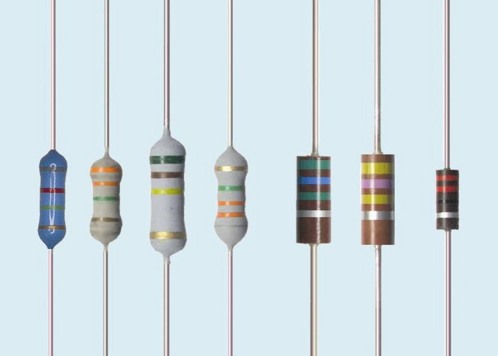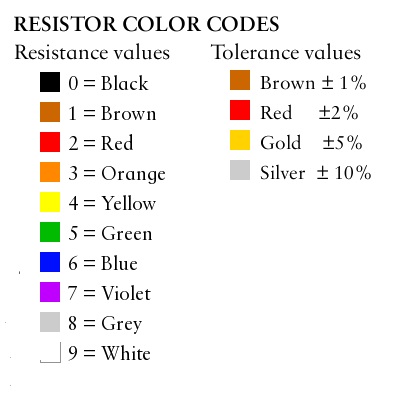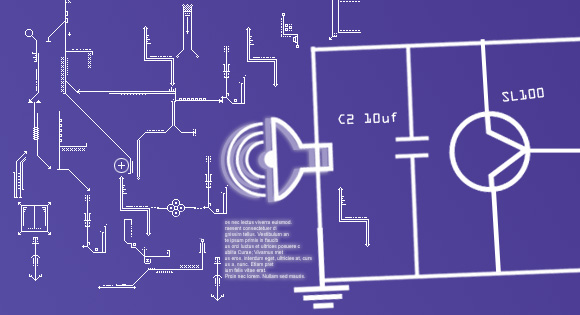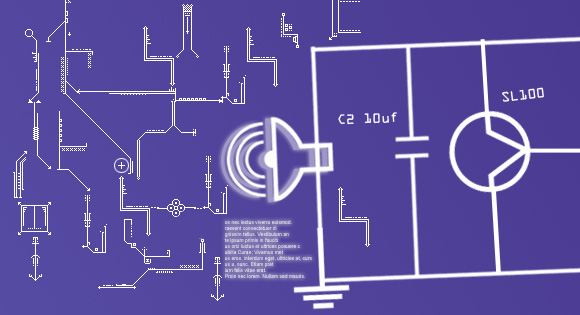Resistors
A Resistor is an electronic component whose resistance value tells us about the opposition it offers to the flow of the electric current. Resistance is measured in ohms (Ω), kilo-ohms (kΩ) and mega-ohms (mΩ) .

Symbol of resistor
The electrical functionality of a resistor is specified by its resistance: common commercial resistors are manufactured over a range of more than nine orders of magnitude. When specifying that resistance in an electronic design, the required precision of the resistance may require attention to the manufacturing tolerance of the chosen resistor, according to its specific application. The temperature coefficient of the resistance may also be of concern in some precision applications. Practical resistors are also specified as having a maximum power rating which must exceed the anticipated power dissipation of that resistor in a particular circuit: this is mainly of concern in power electronics applications.A resistor with higher power ratings are physically larger and may require heat sinks. In a high-voltage circuit, attention must sometimes be paid to the rated maximum working voltage of the resistor.
Color coding of resistors
The value of the resistance is found out by colour coding. The resistors have a band of colours shown in their outer covering. Here are the steps to determine the value of the resistor.
» All resistors have three bands of colors, followed by a space and then a fourth band of color. The fourth band of color will be brown, red, gold or silver.
» To read the colors turn it to the position such as the three consecutive colors come on the left and then the space and the rest of the colors.
» The first two colors from the left indicate the first two digits of the value. The third color represents the digital multiplier. That is, it indicates how much you have to multiply the first two numbers with. Thus if you have a resistance with the first three colors being brown, black and red, the value of resistance is 10*100 = 1000 ohms or 1K.
» The last band, after the space indicates the tolerance of the resistor. This indicates the range of accuracy of the resistor. Thus, along with the three colors above, if the fourth colors are gold, it means you have a tolerance between +/-5%. Thus the actual value of the resistance can be between 950 Ohms and 1K.
» There can also be resistors with five colors. If so, the first three represents the digits, the fourth will be the multiplier and the fifth will be the percentage of tolerance. This indicates that a more precise value of the resistor used can be obtained from a 5-colour resistor.

Types of resistors
There are many types of resistors available. The most common one ceramic rod wound by copper wires on the inside. The number of copper turns and the thickness of the copper determine the resistance of the component. The more the turns and lesser the thickness, the more the resistance. There are also resistors with spiral patterns of carbon, instead of the copper winding. Such resistors are used for making smaller value resistors.
1. Wire-wound Resistors
The resistors with a ceramic rod wound up with copper wires are called wire-wound resistors. Such resistors have the effect of inductance as they have copper windings. Even though the wires are wound in sections with alternate reversed condition an inductance is produced. Thus, different types of windings are used. One type of winding is called the flat thin former method which helps in reducing the cross-sectional area of the coil to a great extent. There are also other types of windings called Ayrton-Perry winding and bifilar winding. Some wire-wound resistors have an aluminium case so that they can be connected to heat sinks which dissipate heat.
2. Carbon Composition Resistors
They are usual resistors with a resistive element in the shape of a cylinder. The resistive element is a mixture of carbon powder and ceramic. This mixture is held together with the help of a resin. This mixture is embedded with wire leads. This is then attached to wires made of lead. The value of the resistor can be found out by a method called colour coding, which is painted onto the outer body of the resistor.
If the concentration of carbon increases, the resistance of the component decreases. This type of resistor is not used so commonly now. Though this resistor was highly reliable, their overheating and overvoltage characteristics are not so reliable.
3. Carbon film
This type of resistor is applicable for circuits working under a range of temperatures. The resistor is made by depositing a carbon film onto an insulating substrate. They can operate at a range from -55 °C to 155 °C. The voltage range varies from 100 Volts to 650 Volts with a resistance from 1Ω to 10 MΩ.
4. Thin and Thick Film Resistors
This type of resistor was the backbone of the popular surface mount device resistors used now. The names differentiate in the manner in which the film is applied onto the cylinder. For a thin film resistor, vacuum deposition method is used to include the resistive material onto the insulating substrate. This type of resistor is commonly used for making printed circuit boards. This type of resistor produces accurate resistance as the whole process of its making can be controlled.
Thick films are also produced in the same manner as a thin film. But they also have some additional compounds like glass and also a screen printing liquid.
Both of them vary in their temperature ranges as well as prices. Thin films are more expensive than thick films.
5. Metal Film Resistors
This type of resistor is made by coating with nickel chromium [NiCr]. The process of making this resistor is similar to that of thin film resistors. The difference will be in the compounds used.
6. Ammeter Shunt Resistor
This is the most unique type of resistor which is used for current sensing. It has four terminals and is used in the milliohms and microohms range. Though they are used for measuring small currents, if the current is allowed to pass through a shunt mechanism, they can be used for measuring high currents as well. Through this mechanism the current is measured with accordance to the voltage drop across it.
The shunt mechanism consists of two brass blocks. Inbetween them are strips of low temperature co-efficient of resistance alloys. Large bolts threaded into the blocks make the current connections.
There are also other types of resistors like lead arrangement resistors, grid resistors and so on. There are also variable resistors like the tapped resistors, metal oxide varistor (MOV) and strain gauge. To know more click on the following links.



